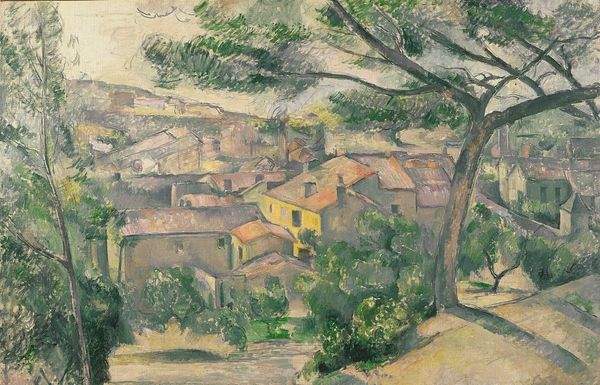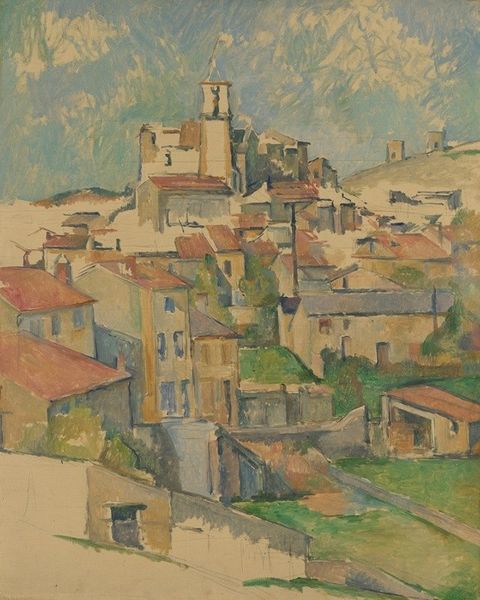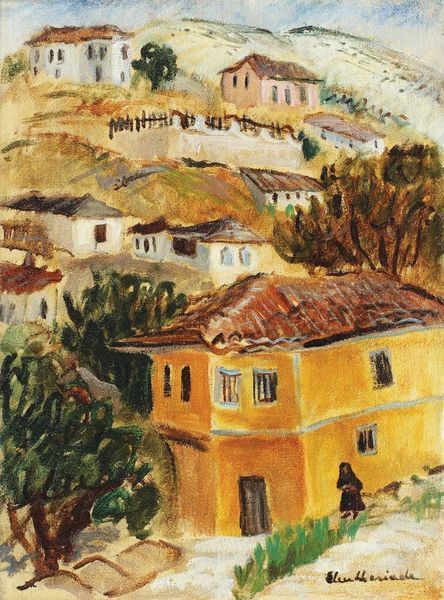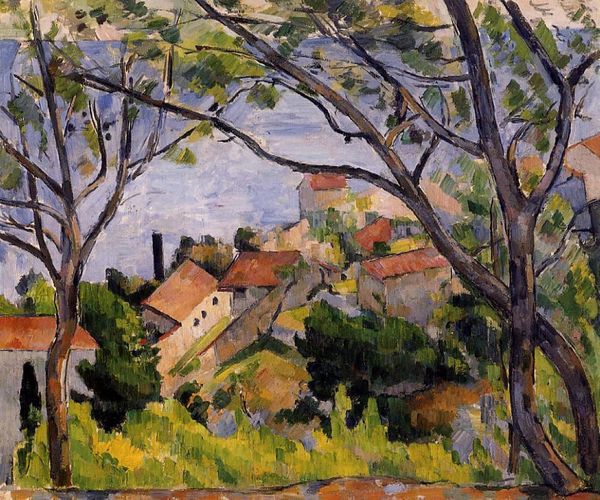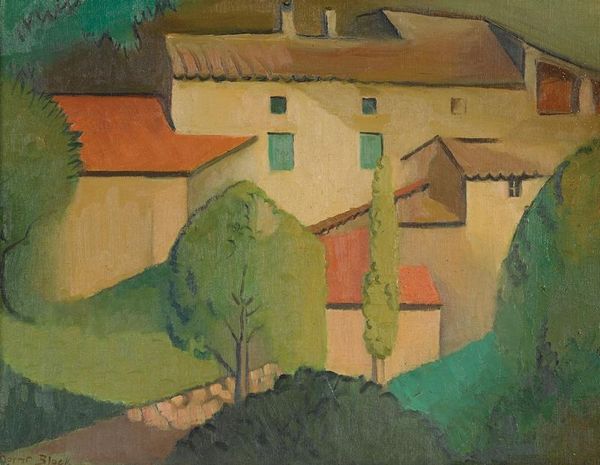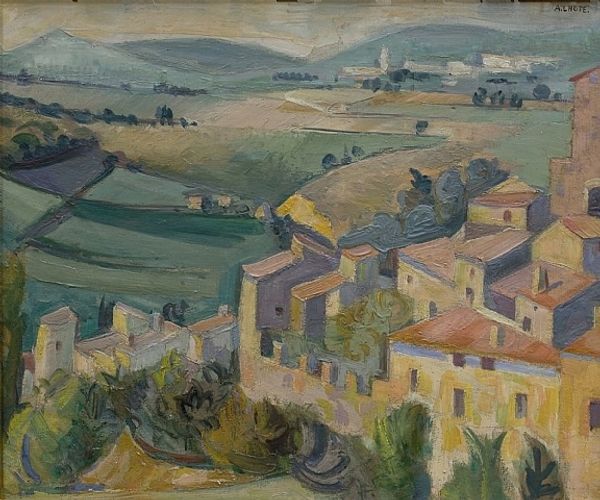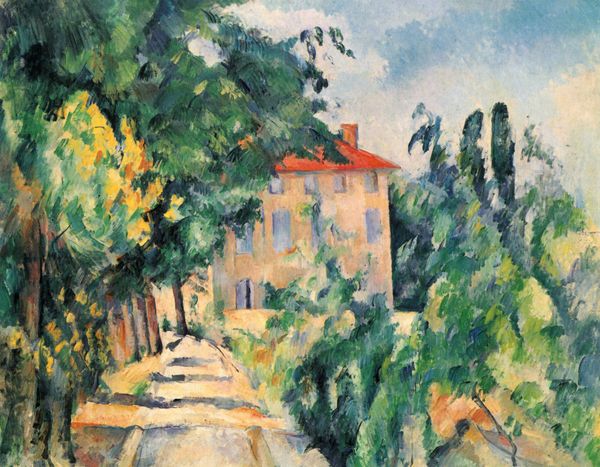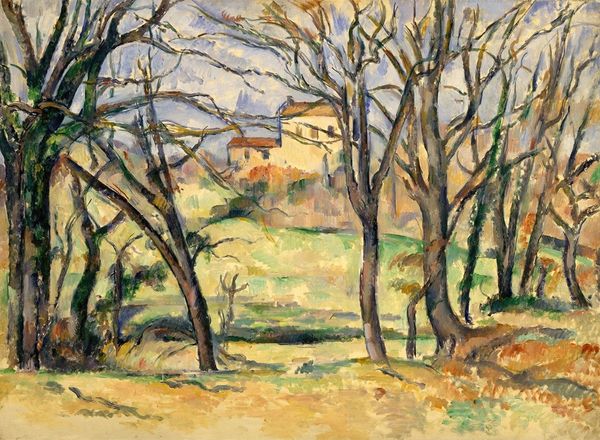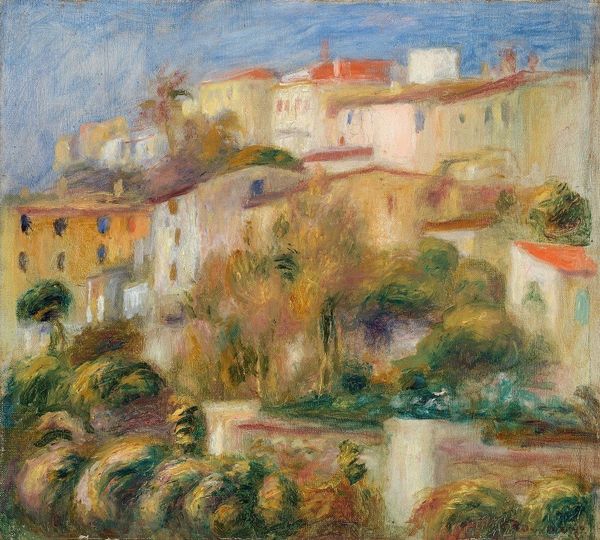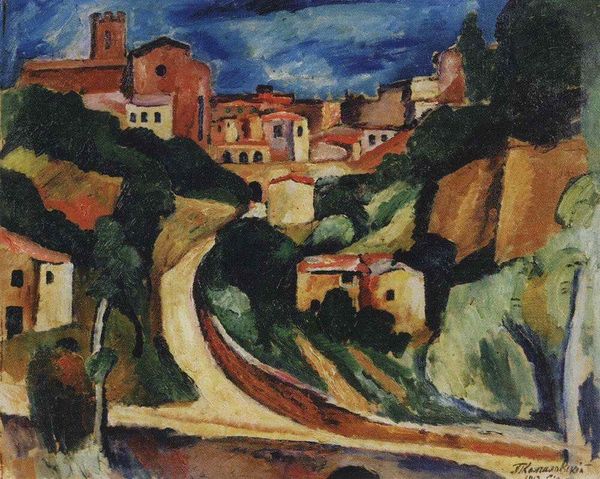
painting, oil-paint
#
painting
#
oil-paint
#
landscape
#
figuration
#
oil painting
#
cityscape
#
modernism
Copyright: Public domain
Editor: This is Amedeo Modigliani's "Landscape," painted in 1919 using oil paints. There's something almost childlike about the way the houses are rendered, yet it feels incredibly sophisticated at the same time. What do you see in this piece? Curator: This "Landscape" evokes, for me, a sense of longing and perhaps even the vulnerability of cultural memory. Notice how the dominant tree in the foreground seems to stand as a silent sentinel. Trees are common symbols that connect the earth to the heavens; does this one strike you as particularly protective or isolated? Editor: Isolated, definitely. It's stark against the soft greens and reds of the buildings. Curator: And what about the town itself, receding into the landscape? It feels almost dreamlike. The red rooftops against the muted building walls – it suggests the shared cultural history rooted in this specific geographical place but is also made personal by his handling. Is it a realistic depiction, or does it hold deeper, more symbolic weight? Editor: I hadn’t thought of it like that, but now that you mention it, the town does seem to fade into memory. Maybe the painting is less about a specific place and more about a feeling? Curator: Precisely. It's an intimate interpretation of a landscape rather than just a representation of a location, imbuing personal experiences with collective symbols. Perhaps the cultural context, even his own personal struggles, blend in his rendering. Does knowing it’s one of his last landscapes before his death change how you interpret it at all? Editor: It does, actually. I see more of a quiet resignation in it now. A peaceful acceptance. Curator: These visual symbols layered in art offer an intimate conversation between us and the past. It’s how Modigliani speaks to us across a century. Editor: I never considered how personal a landscape could be! Thanks, this has been really insightful.
Comments
No comments
Be the first to comment and join the conversation on the ultimate creative platform.
